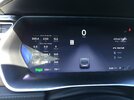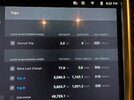I have a 2015 Model S.
When I first purchased the car, a 100% charge would lead to about 270 miles of charge. Typically, I would charge it to 90% except prior to long trips so it would stop charging at about 240 miles or so (about 90% of 270).
It has been 6 years and if I charge it to the maximum I currently get it to about 230 miles of charge. This is even if I do a 100% charge.
So despite me leaving the line on the battery icon at 90% charge as the maximum, the battery is charging up to 230 miles or so which is the current 100% charge.
Do I need to move the line on my battery icon even lower so that I only charge 90% of 230 or about 200 miles or so or do I leave it at the current 90% on the battery icon which stops charging at 230miles even though that is currently the 100% max charge.
I hope this question makes sense
When I first purchased the car, a 100% charge would lead to about 270 miles of charge. Typically, I would charge it to 90% except prior to long trips so it would stop charging at about 240 miles or so (about 90% of 270).
It has been 6 years and if I charge it to the maximum I currently get it to about 230 miles of charge. This is even if I do a 100% charge.
So despite me leaving the line on the battery icon at 90% charge as the maximum, the battery is charging up to 230 miles or so which is the current 100% charge.
Do I need to move the line on my battery icon even lower so that I only charge 90% of 230 or about 200 miles or so or do I leave it at the current 90% on the battery icon which stops charging at 230miles even though that is currently the 100% max charge.
I hope this question makes sense




